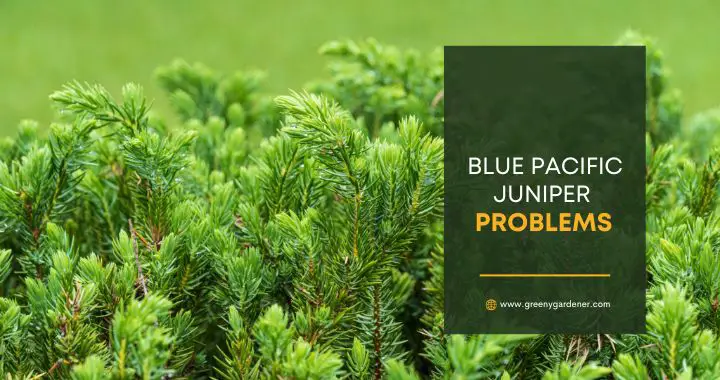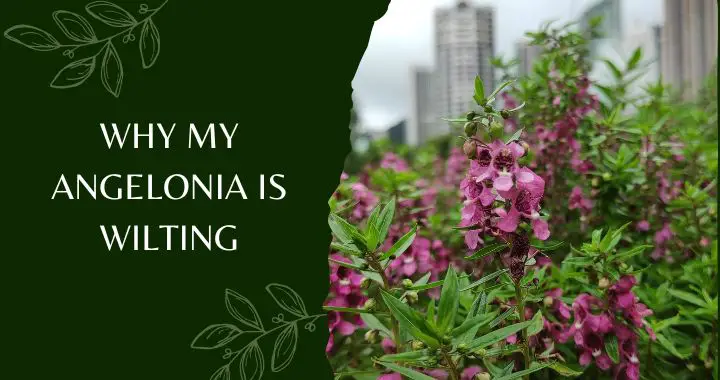Mandevilla Leaves Turning Yellow: Causes & Solutions
If you’ve noticed your Mandevilla leaves turning yellow, don’t fret! This common issue can be caused by several factors, but fortunately, there are proven solutions to help your plant regain its vibrancy.
In this article, we’ll explore the potential causes of yellowing mandevilla leaves and provide effective remedies to restore their lush green color.
What's On the Page
3 Causes of Mandevilla Leaves Turning Yellow
1. Watering Issues
Overwatering: One of the main culprits behind yellow Mandevilla leaves is overwatering. Excessive moisture can lead to root rot, depriving the plant of essential nutrients and causing leaf discoloration.
Underwatering: On the other hand, underwatering can also result in yellow leaves. Insufficient water supply can cause stress and nutrient deficiencies, manifesting as yellowing foliage.
2. Nutrient Deficiencies
Nitrogen Deficiency: When mandevilla plants lack sufficient nitrogen, their leaves may turn yellow. Nitrogen is vital for healthy foliage growth, so a deficiency can lead to a loss of vibrant green color.

🌿 The Companion Planting & Gardening Book (eBook)
Bigger harvests, fewer pests — natural pairings & simple layouts. $2.40
Get – $2.40
🪴 The Pest-Free Indoor Garden (eBook)
DIY sprays & soil tips for bug-free houseplants. $1.99
Get – $1.99Iron Deficiency: Insufficient iron uptake can also cause yellowing leaves in mandevilla plants. Iron is essential for chlorophyll production, and its deficiency disrupts the plant’s ability to photosynthesize properly.
3. Pests and Diseases
Aphid Infestation: Aphids are tiny insects that feed on plant sap, causing leaf damage and yellowing. Check for signs of aphids on the undersides of leaves or use sticky traps to identify their presence.
Fungal Infections: Certain fungal diseases, such as powdery mildew or leaf spot, can lead to yellowing foliage. These infections often appear as white powdery patches or dark spots on the leaves.
Proven Solutions for Mandevilla Yellow Leaves
1. Adjust Watering
Ensure proper drainage: Mandevilla plants prefer well-draining soil. Make sure your pot or garden bed allows excess water to escape, preventing waterlogged conditions.
Water consistently: Maintain a regular watering schedule, providing enough moisture to keep the soil evenly moist but not overly wet or dry.
2. Address Nutrient Deficiencies
Fertilize appropriately: Use a balanced fertilizer with higher nitrogen content to address nitrogen deficiencies. Additionally, consider adding an iron-rich fertilizer or supplement to combat iron deficiency.
Follow application instructions: Apply fertilizers according to package instructions to avoid overfertilization, which can cause further issues.
3. Pest and Disease Control
Use organic insecticides: If aphids are present, consider using organic insecticidal soaps or neem oil to control the infestation. Follow the product instructions carefully.
Prune affected leaves: Trim and discard leaves showing signs of fungal infections to prevent the spread of disease. Provide adequate air circulation around the plant to discourage fungal growth.
Additional Tips to Maintain Healthy Mandevilla Plants
1. Light Requirements
Ensure adequate sunlight: Mandevilla plants thrive in bright, indirect sunlight. Place them in a location where they receive at least 6 hours of sunlight each day. Insufficient light can lead to weakened plants and yellowing leaves.
2. Temperature and Humidity
Ideal temperature range: Mandevillas prefer temperatures between 60-80°F (15-27°C). Avoid exposing them to extreme heat or cold, as it can stress the plant and contribute to leaf discoloration.
Maintain moderate humidity: These plants prefer moderate humidity levels. If the air in your home or region is dry, consider using a humidifier or placing a tray of water near the plant to increase humidity.
3. Pruning and Training
Regular pruning: Prune your mandevilla plant to promote bushier growth and remove any dead or yellowing leaves. This encourages the plant to focus its energy on healthy foliage production.
Proper training and support: If you’re growing a vining variety, provide trellises or supports to guide the plant’s growth. This helps prevent leaf overcrowding and allows for better air circulation.
4. Soil and Potting
Well-draining soil: Use a well-draining potting mix that allows excess water to escape easily. A mixture of peat moss, perlite, and compost works well for Mandevilla.
Suitable pot size: Choose a pot that provides enough room for the plant’s roots to grow comfortably. A pot that is too small can lead to root congestion and nutrient deficiencies.
5. Avoid Excessive Fertilization
Follow a fertilization schedule: Apply a balanced, slow-release fertilizer according to the manufacturer’s instructions. Avoid overfertilizing, as this can lead to nutrient imbalances and yellowing leaves.
Frequently Asked Questions (FAQs)
Why are my Mandevilla leaves turning yellow?
There are several possible reasons for yellowing mandevilla leaves. Overwatering, underwatering, nutrient deficiencies (such as nitrogen or iron), pest infestations (like aphids), and fungal diseases can all contribute to leaf discoloration.
How can I prevent overwatering my mandevilla plant?
To prevent overwatering, ensure that your Mandevilla plant is in a pot or garden bed with proper drainage. Use well-draining soil and water only when the top inch of the soil feels dry. Avoid leaving the plant in standing water, as this can lead to root rot.
What should I do if my Mandevilla plant is underwatered?
If you notice signs of underwatering, increase your watering frequency. Water the plant thoroughly, allowing water to soak into the soil. However, be careful not to overcompensate and create waterlogged conditions.
How can I address nutrient deficiencies in my mandevilla plant?
For nitrogen deficiencies, use a balanced fertilizer with higher nitrogen content. Follow the fertilizer’s instructions for application. If you suspect an iron deficiency, consider using an iron-rich fertilizer or an iron supplement specifically formulated for plants.
Why are my Mandevilla leaves turning yellow?
There are several possible reasons for yellowing mandevilla leaves. Overwatering, underwatering, nutrient deficiencies (such as nitrogen or iron), pest infestations (like aphids), and fungal diseases can all contribute to leaf discoloration.
How can I prevent overwatering my mandevilla plant?
To prevent overwatering, ensure that your Mandevilla plant is in a pot or garden bed with proper drainage. Use well-draining soil and water only when the top inch of the soil feels dry. Avoid leaving the plant in standing water, as this can lead to root rot.
What should I do if my Mandevilla plant is underwatered?
If you notice signs of underwatering, increase your watering frequency. Water the plant thoroughly, allowing water to soak into the soil. However, be careful not to overcompensate and create waterlogged conditions.
How can I address nutrient deficiencies in my mandevilla plant?
For nitrogen deficiencies, use a balanced fertilizer with higher nitrogen content. Follow the fertilizer’s instructions for application. If you suspect an iron deficiency, consider using an iron-rich fertilizer or an iron supplement specifically formulated for plants.
How do I control aphids on my mandevilla plant?
To control aphids, you can use organic insecticidal soaps or neem oil. Apply the product according to the instructions, focusing on the undersides of leaves where aphids tend to gather. You can also use sticky traps to monitor and capture aphids.
Should I prune my mandevilla plant?
Yes, regular pruning is beneficial for mandevilla plants. It helps promote bushier growth and removes dead or yellowing leaves. Prune selectively and avoid removing too much foliage at once. Trim the plant during the active growing season for best results.
What type of soil is best for mandevilla plants?
Mandevilla plants prefer well-draining soil. A mixture of peat moss, perlite, and compost is a good choice. This combination allows excess water to drain away while providing adequate nutrients for the plant.
How much sunlight do mandevilla plants need?
Mandevilla plants thrive in bright, indirect sunlight. They generally require at least 6 hours of sunlight per day. Place them in a location with good light exposure, such as a sunny window or a spot in your garden that receives ample sunlight.
Can I grow mandevilla indoors?
Yes, mandevilla plants can be grown indoors. Just ensure they receive sufficient sunlight and proper care. Place them near a sunny window or provide supplemental artificial light if needed. Monitor the humidity levels and maintain suitable watering practices.
Conclusion
Yellowing mandevilla leaves can be caused by various factors, including watering issues, nutrient deficiencies, and pest or disease problems.
By adjusting your watering practices, addressing nutrient imbalances, and implementing proper pest and disease control measures, you can restore your mandevilla plant’s health and bring back its vibrant green foliage.
Remember to observe your plant closely, provide care tailored to its specific needs, and enjoy the beauty of a thriving Mandevilla!
- Plants That Keep Bugs Away Outdoors – Your Guide To A Pest-Free Garden - January 5, 2026
- Natural Fruit Fly Repellent – Your Ultimate Guide To A Pest-Free - January 5, 2026
- Plants That Keep Bugs Away From Vegetable Garden – Your Natural Pest - January 5, 2026


